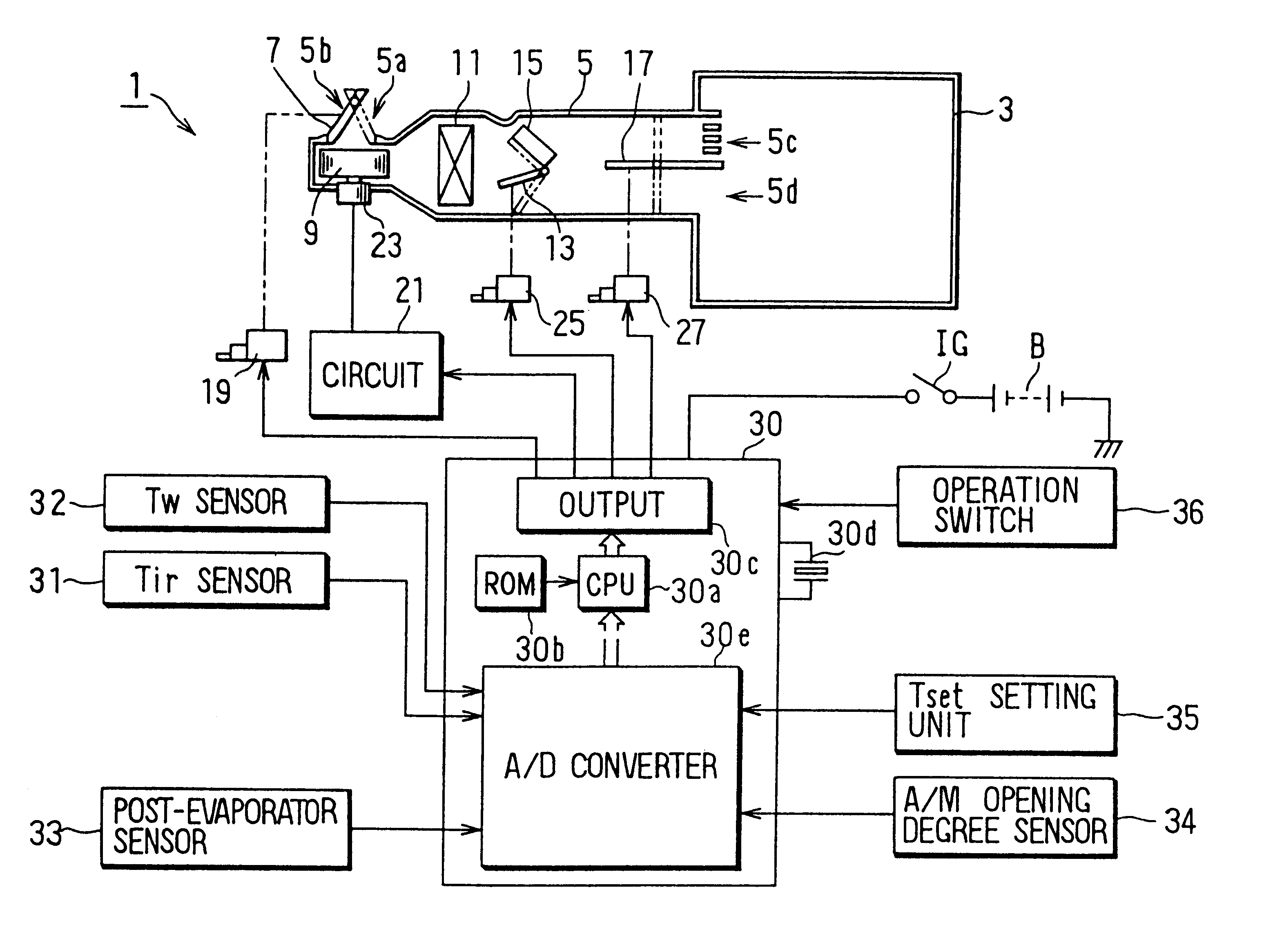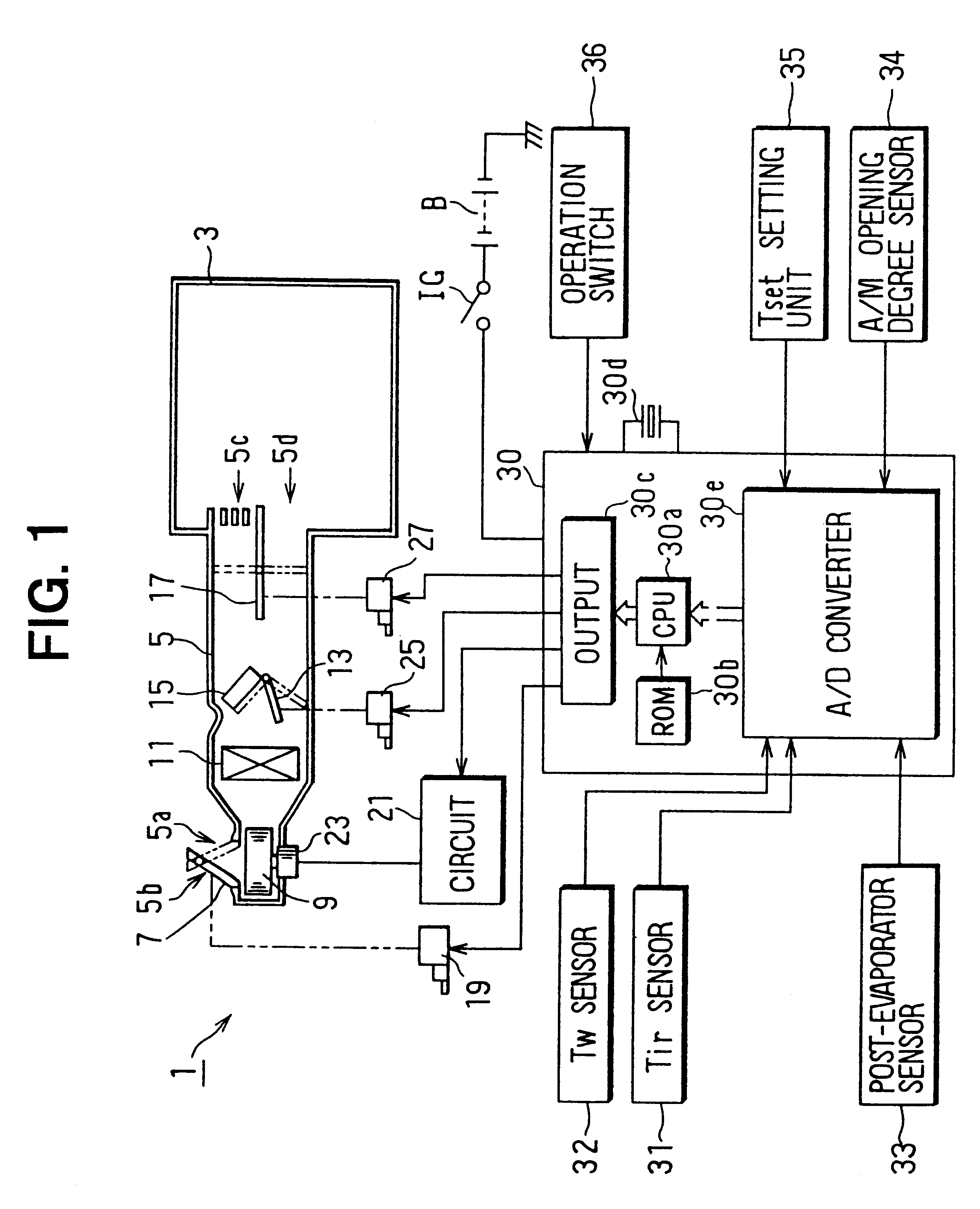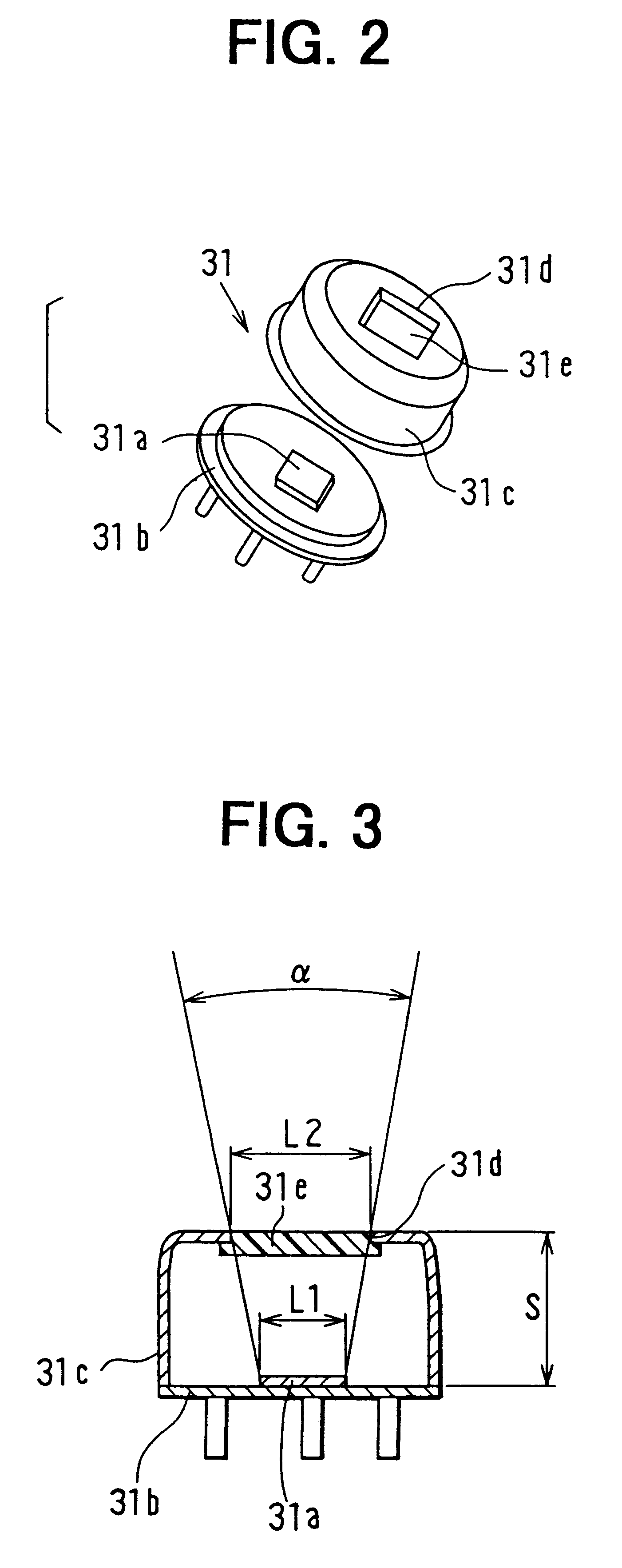Vehicle air conditioner with non-contact temperature sensor
a technology of temperature sensor and vehicle, applied in the direction of process and machine control, optical radiation measurement, instruments, etc., can solve the problems of deterioration of air-conditioning feeling due to error detection and higher product cos
- Summary
- Abstract
- Description
- Claims
- Application Information
AI Technical Summary
Benefits of technology
Problems solved by technology
Method used
Image
Examples
first embodiment
Outside air from the outside air introduction port 5a or inside air from the inside air introduction port 5b is blown toward the evaporator 11 by the blower 9 which is operated in accordance with a rotation speed of a blower motor 23 driven by a driving circuit 21. The evaporator 11 cools air blown by the blower 9 by using refrigerant circulating in a refrigerant cycle of the vehicle air conditioner. In the first embodiment, the air amount blown into the passenger compartment 3 is adjusted by the driving circuit 21 and the blower motor 23.
The air mixing damper 13 is driven by a servomotor 25. Based on an opening degree of the air mixing damper 13, a ratio between an air amount passing through the heater core 15 and an air amount bypassing the heater core 15 is adjusted so that the temperature of air blown into the passenger compartment 3 is adjusted. That is, the air mixing damper 13 and the servomotor 25 are used as a temperature adjustment unit for adjusting temperature of air blo...
second embodiment
According to the present invention, the surface temperature sensor 31 detects the surface temperature of the detection range including: the ceiling 43 in which the surface temperature is changed to approximately correspond to the inside air temperature, and the side windshield 44a and the rear glass 45 in which the surface temperature is changed by the outside air temperature. Therefore, the surface temperature sensor 31 outputs the surface temperature signal including the environment conditions of the inside air temperature and the outside air temperature. Thus, based on signals from the sunlight sensor 37 and the surface temperature sensor 31, the temperature of the passenger compartment 3 can be suitably controlled to correspond to the inside air temperature, the outside air temperature and the sunlight amount. As a result, the temperature of the passenger compartment can be accurately controlled without using an outside air temperature sensor and an inside air temperature sensor...
third embodiment
According to the present invention, the surface temperature sensor 31 detects the surface temperature of the detection range including: the ceiling 43 in which the surface temperature is changed to approximately correspond to the inside air temperature, and the upper body part 42a in which the surface temperature is changed by the sunlight. Therefore, the surface temperature sensor 31 outputs the surface temperature signal including the environment conditions of the inside air temperature and the sunlight amount. Thus, based on signals from the outside air temperature sensor 38 and the surface temperature sensor 31, the temperature of the passenger compartment 3 can be suitably controlled to correspond to the inside air temperature, the outside air temperature and the sunlight amount. As a result, the temperature of the passenger compartment can be accurately controlled without using an inside air temperature sensor and a sunlight sensor.
Further, in the third embodiment, because the...
PUM
 Login to View More
Login to View More Abstract
Description
Claims
Application Information
 Login to View More
Login to View More - R&D
- Intellectual Property
- Life Sciences
- Materials
- Tech Scout
- Unparalleled Data Quality
- Higher Quality Content
- 60% Fewer Hallucinations
Browse by: Latest US Patents, China's latest patents, Technical Efficacy Thesaurus, Application Domain, Technology Topic, Popular Technical Reports.
© 2025 PatSnap. All rights reserved.Legal|Privacy policy|Modern Slavery Act Transparency Statement|Sitemap|About US| Contact US: help@patsnap.com



